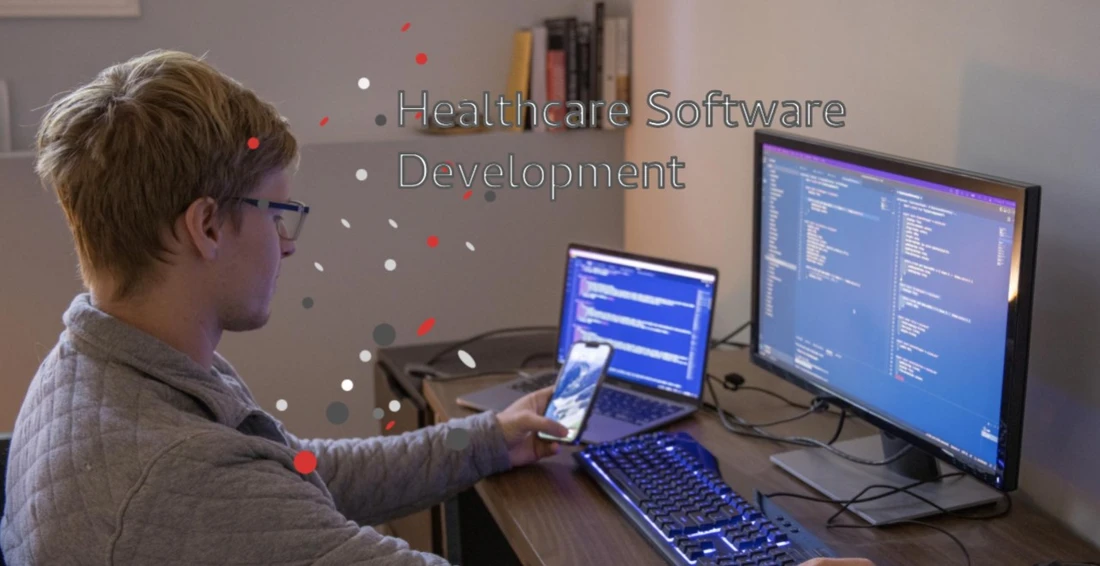Companies today face immense pressure to continually deliver enhanced and innovative customer experiences (CX). However, when it comes to software development, this can be even more challenging due to its complex nature and scope. Additionally, different technologies support various functional capabilities, and each of these technologies needs to also be capable of integrating with an ever-expanding array of systems and platforms.
Development life cycle
The typical software development life cycle consists of 6 stages as outlined below. Testing and monitoring should be conducted throughout all stages of this life cycle.
1. Discovery/planning: Define and document project goals, scope, requirements, and expectations. Based on these, a comprehensive roadmap and a go-forward plan should be developed, and the necessary resources allocated.
2. Design: Develop a plan for the required software architecture, user interface, and technical specifications with the relevant internal experts.
3. Development/implementation: Hand over the project to the development/engineering team who will begin writing the code based on the predetermined plan and design requirements.
4. Testing and quality assurance: Thoroughly test the developed software to identify and promptly rectify any defects.
5. Release/deployment: Following testing, deploy the software into a live production environment, making it accessible to customers.
6. Maintenance and support: Continuously test to ensure no adverse effects are experienced. Where issues are identified the team will need to provide reliable and timely solutions and maintenance to rectify these.
To ensure prompt and successful software development, we consider the most crucial stages to be ‘testing and quality assurance’ and ‘maintenance and support.’ Several factors contribute to their importance, including:
- The accelerated pace of recent developments has imposed additional pressure to improve the speed of software testing.
- The scope of testing has expanded in recent years, now necessitating the inclusion of CX.
- Omnichannel customer journeys require comprehensive end-to-end testing.
Automating functional testing
Functional testing ensures that the software’s functions and features operate correctly according to specified requirements, making it a critical pillar of all software development. It plays an unquestionable role in ensuring software quality by verifying that the software fulfills its intended functionality, is free from defects and where they are found they can be efficiently and quickly addressed. Each of these factors allows for the quicker release of newly developed software to the market, enhances customer satisfaction, reduces employee workloads, and ultimately contributes to improving the bottom line.
With the ever-increasing growth of omnichannel journeys, companies today require a more convenient and suitable method to verify holistic customer experiences across all channels, including voice, web, live chat, chatbot, email, and SMS. It is also crucial that organizations can test the transition between various self-service channels and in particular to human-assisted service channels to ensure a positive customer experience. This needs to also include monitoring that all relevant details and situational context are being transferred correctly across each to ensure a seamless transition from one to the other.
To achieve comprehensive functional testing, organizations should invest in proactive and automated testing. Automated testing more effectively replicates the diverse ways that customers may interact with organizations, as there are too many variations of this for comprehensive manual testing. Automation of functional testing enables organizations to quickly create extensive sets of test scripts and execute these tests on a predetermined basis.
Types of functional testing
Functional testing ensures that the software being developed complies with the requirements that were specified. Functional testing solutions can include the following:
- Regression testing: Retesting of existing software when changes occur, such as bug fixes or the implementation of new features. Any code that could potentially be impacted by such changes must undergo regression testing.
- Unit testing: Testing that focuses on examining individual units or components of the software in isolation. Typically, a unit refers to the smallest testable part of the software, such as a single function, method, or class.
- Integration testing: Testing the interactions between different components, modules, or systems within a software application. This ensures that all of these components function harmoniously when integrated into the overall system. Integration testing also validates the smooth flow of data between each part of the software.
- User interface testing: Testing which concentrates specifically on verifying the graphical user interface (UI) of the software application. The primary objective is to ensure that the UI elements (such as buttons, menus, and forms) function correctly and provide a positive user experience.
- System testing: Testing of the complete system – this ensures that each system component is functioning as per the predefined requirements.
- Sanity testing: Surface level testing on the main functions of the software. This is a subset of regression testing.
- User acceptance testing: Evaluating the software from the user’s perspective. It aims to determine whether it can meet real-world requirements and ultimately whether it is ready for deployment.
Functional testing is essential for validating the originally documented requirements and specifications, ensuring that the software behaves as expected and meets the agreed-upon criteria. It efficiently identifies defects within the software, leading to faster resolution times and reduced troubleshooting hours. Functional testing can also easily assess every stage of the customer or user journey and repeat testing as and when codes are altered to ensure no adverse effects, as well as robustly test the boundaries of the software.
Automated functional testing in practice
The quality assurance team of one of the largest retailers in the United States previously relied solely on manual testing for their functional testing needs. They completed 2 or 3 releases per year. During these development cycles, they engaged third-party resources to create various test cases, and call center agents would then manually perform this testing. This included dialing every number and going through each step of a call. A single test cycle lasted 2-3 weeks, but testing was never fully completed and this frequently allowed defects to go live and negatively impact the experiences of their customers. The testing results were generally poor, and the call center agents felt demotivated due to the ongoing problems.
The retailer then implemented an automated testing solution with Cyara which revolutionized their processes. Through this, the retailer accelerated the creation of test cases and automated functional and regression testing. Testing became more comprehensive and quicker, resulting in fewer defects. Additionally, the morale of the retailer’s agents improved, as they could now focus their time and efforts on providing the best customer support and experience, rather than on mundane and laborious manual testing.
The key achievements resulting from their transition to automated testing were:
- Increased testing coverage from 15% to 85%
- Decreased execution time of tests by 97%
- Agents empowered to better focus on serving customers
Conclusion
Functional testing services play an invaluable role in ensuring optimal software quality by validating that the software’s features and functions meet requirements, promptly detecting defects and issues, assuring a positive user experience, and supporting ongoing maintenance and improvements to the software.




